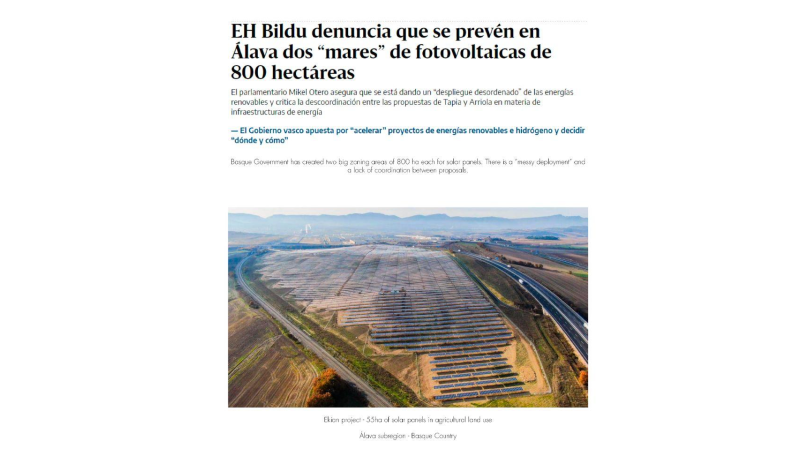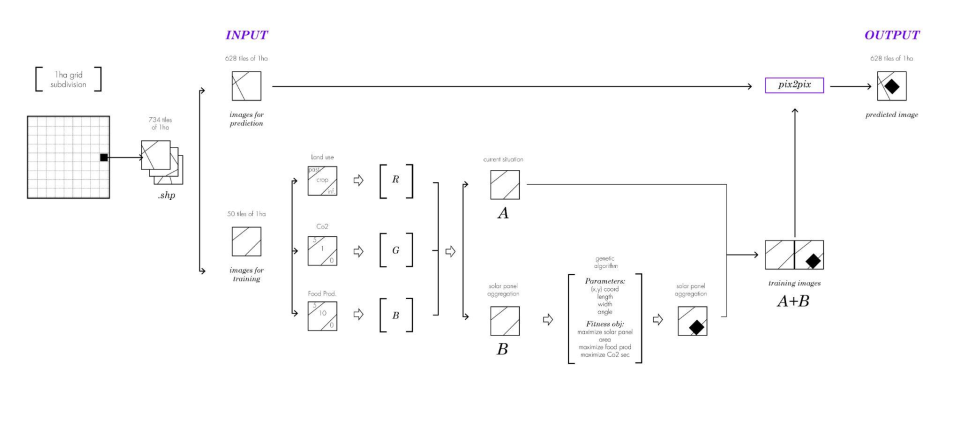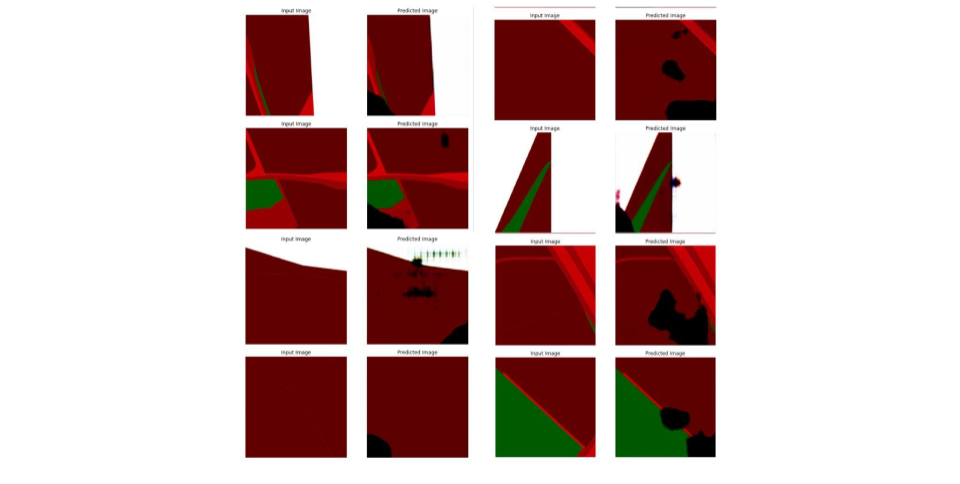INTRODUCTION
Land provides a multiplicity of functions simultaneously, constantly overlooked and ignored: It produces food but also stores carbon, provides habitat for biodiversity, and many more. These functions are linked and compose an interconnected system. The land has more value than the one that is commonly acknowledged.
In this context, in Basque region in Spain, Solar panels in agricultural fields are starting to be proposed in huge areas.

USING AI FOR TO PREDICT THE OPTIMIZATION OF THE ALLOCATION OF SOLAR PANELS
The purpose of this study is to use a Neural Network based AI in order to be able to calculate best areas for their implementation. To do so, previous calculated data of Carbon sequestration, food production and land use in a 1 ha grid subdivision. After, a specific cluster from a previous exercise was chosen in order to create a data sample for the pix 2 pix algorithm. From the 734 tiles selected, 50 were chosen to create the images for training. Based on each data layer, a R for land use, a G for Co2, and a B for Food production value was attributed to each tile. From this colouring, the images were used as (A) the current situation and (B) the solar pannel agregation. With a multiobjective genetic algorithm, the solar panels were aggregated in order to maximize the solar radiation absotion and reduce the food production and Carbon Sequestration loss. Once the best area was obtained, both (A+B) images were joined and after the pix2pix model was used to predict the solar panel dispotition in the rest of the 628 tiles.


Methodology and image creation example
PREDICTED IMAGES AND EVALUATION
The optimization of solar panel aggregation was based on grasshopper, and therefore, only 50 images were created for the training dataset. As a result, the pix to pix algorithm failed to give an accurate area, but at the same time recognized the optimal position (sometimes visible because of the corners).

Predicted images
FUTURE STEPS
The genetic algorithm could be improved due to the fact that the solar panels tended to be in the corners. On top of it, the training dataset should be done for the rest of 5 clusters in order to create different patterns of distribution. A regression model could be used to estimate the food loss and the co2 sequestration loss in the whole territory from the predicted images. Last but not least, the whole territory should be evaluated to select the best tiles for solar panel implementation.
LUR: Neural Networks to optimize solar panel areas is a project of IAAC, Institute for Advanced Architecture of Catalonia developed at Master in City & Technology in 2021/22 by student: Adriana Aguirre Such and faculty: Angelos Chronis, Nariddh Khean, Serjoscha Duering.